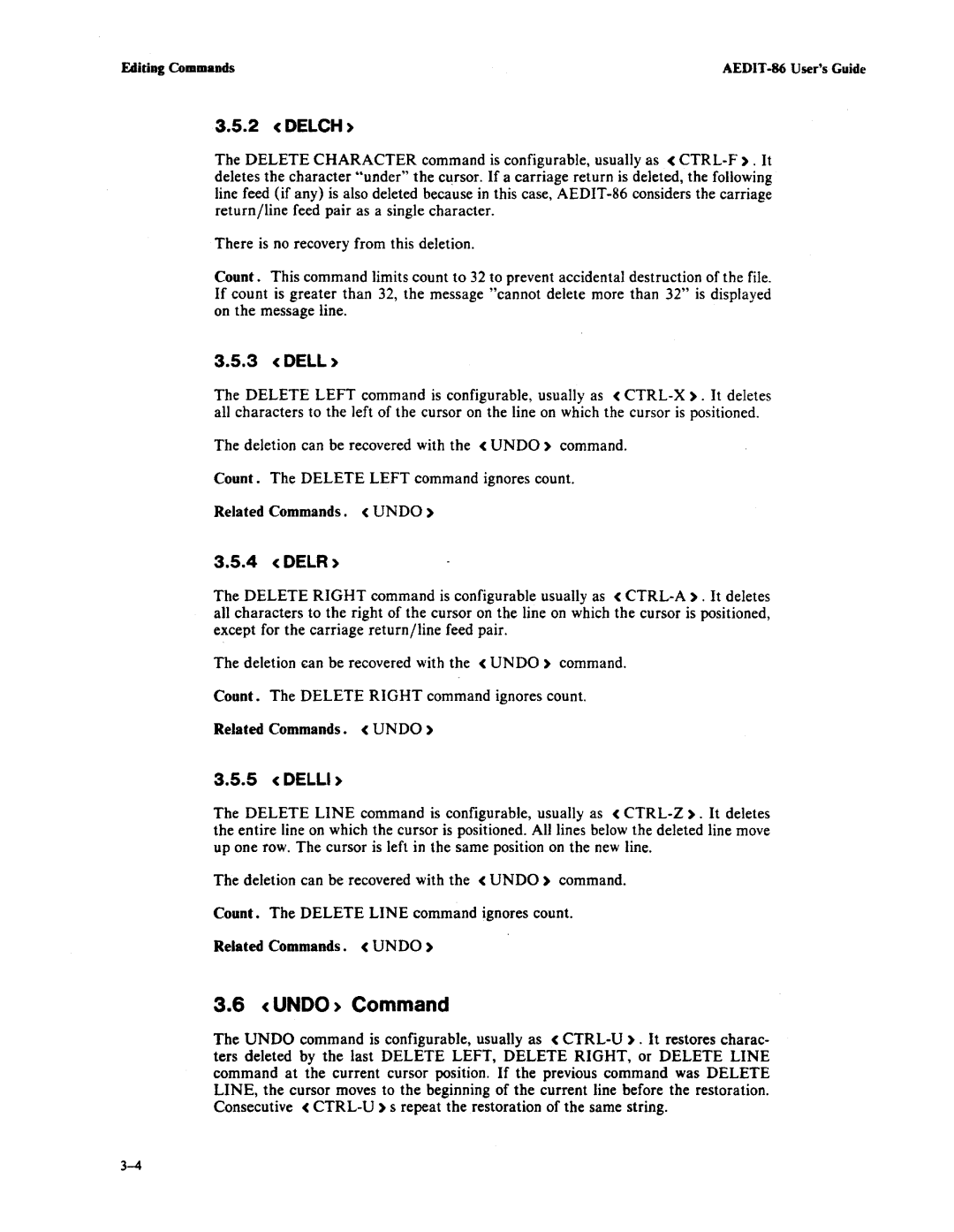AEDIT-86 specifications
The Intel AEDIT-86, also known as the Intel 8086, is a notable microprocessor that played a critical role in shaping the computing landscape. Released in 1978, it was Intel's first 16-bit microprocessor, setting the stage for the x86 architecture that continues to influence modern computing.One of the main features of the AEDIT-86 is its 16-bit architecture, which allows it to process data in larger chunks compared to its 8-bit predecessors. This capability not only improves performance but also increases the amount of memory that can be addressed, allowing for a maximum of 1 MB of RAM. This was a significant advancement at the time, enabling more complex software and operating systems to run efficiently.
The AEDIT-86 is built on a 3-micron process technology, which was innovative for its time and contributed to its performance capabilities. The microprocessor operates at a clock speed of up to 5 MHz, which allowed it to execute more instructions per second than previous generations of processors. This speed, combined with its wide data bus (16 bits), enables the processor to handle a larger volume of information more quickly.
Intel incorporated several key technologies in the AEDIT-86, including segmentation. This feature divides the memory into different segments, making it easier for programs to access data and improving memory management. The AEDIT-86 also supports a minimum of four 64 KB segments, which enhances the organization and access of programs and data in memory.
Another significant aspect of the AEDIT-86 is its compatibility with the existing 8080 and 8085 instruction sets, which facilitated easier migration for developers and helped the processor gain traction in the market. This backward compatibility allowed existing software to be ported to the new platform with minimal modification.
Furthermore, the Intel AEDIT-86 introduced a powerful instruction set that includes both integer and string manipulation commands, paving the way for more versatile programming. The instruction set architecture (ISA) of the AEDIT-86 supports both high-level programming languages and low-level assembly language, offering flexibility for various applications.
In summary, the Intel AEDIT-86 is a groundbreaking microprocessor known for its 16-bit architecture, advanced segmentation technology, and compatibility with earlier instruction sets. Its introduction marked the beginning of the x86 architecture, which has influenced countless processors and computing systems that followed. The AEDIT-86's features and technologies were instrumental in the evolution of personal computing, laying the groundwork for future innovations in the industry.

